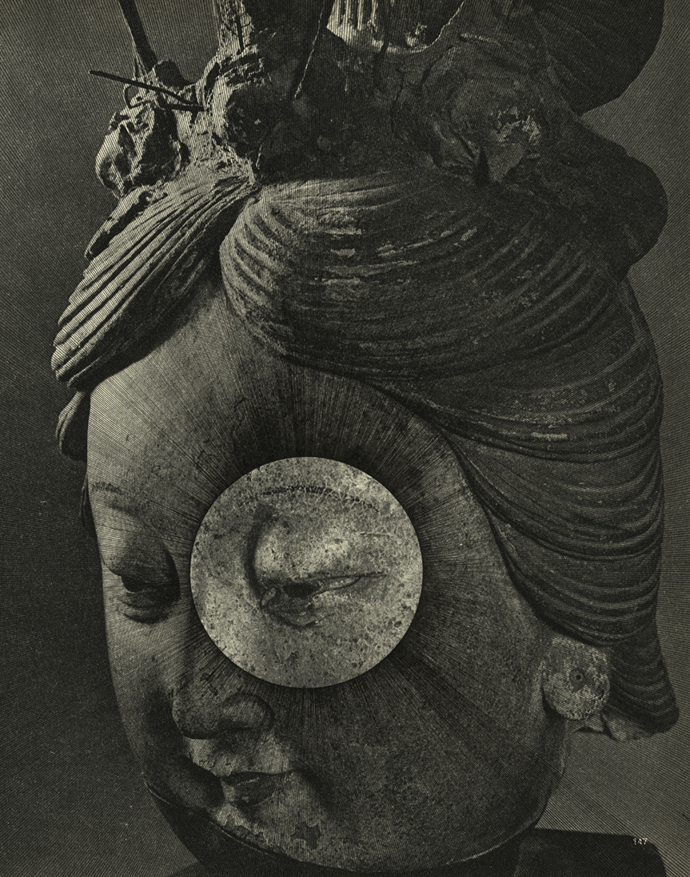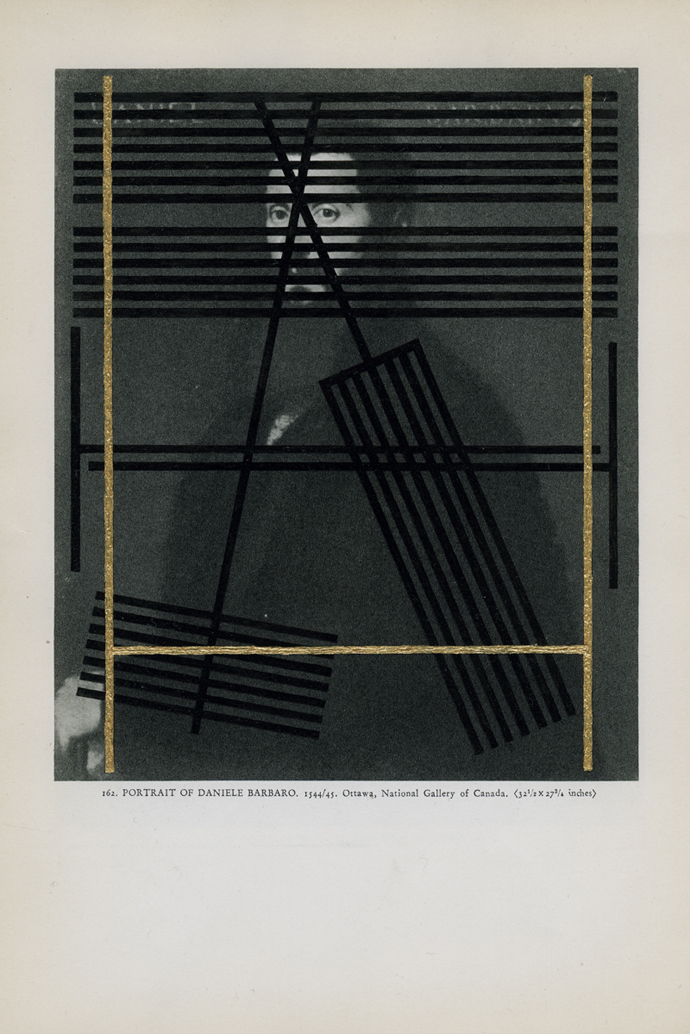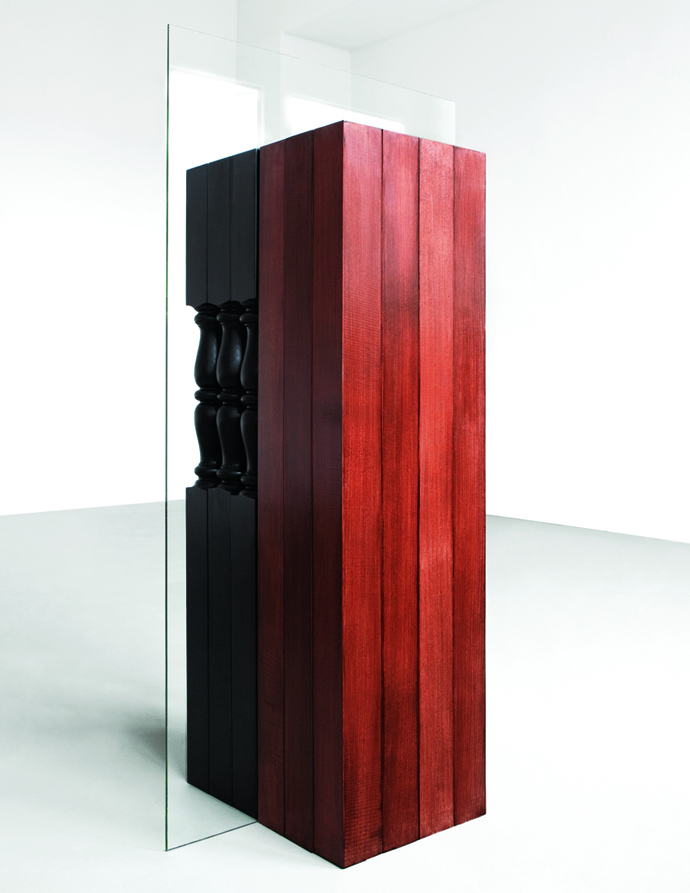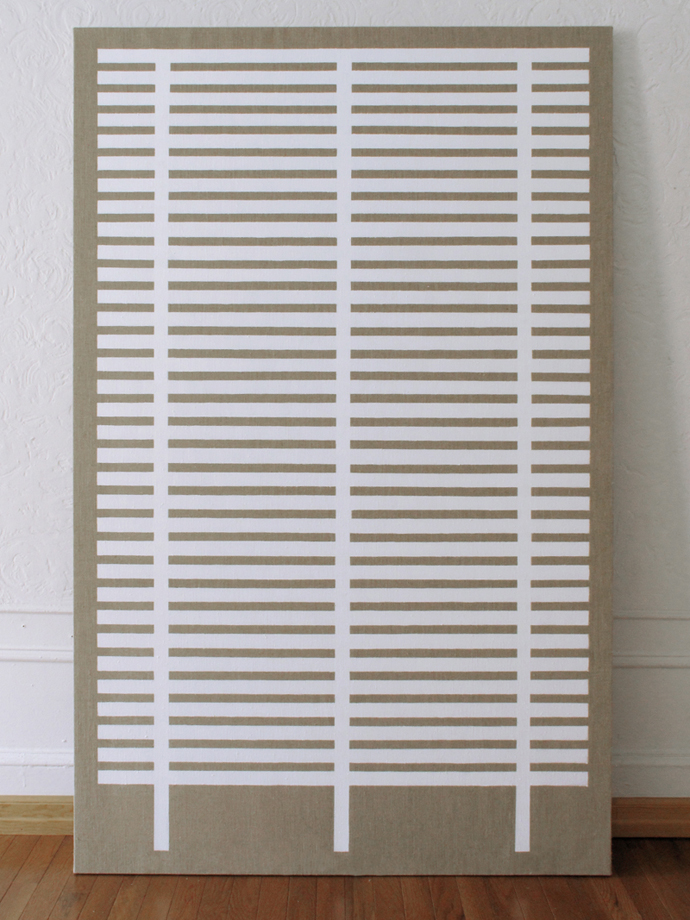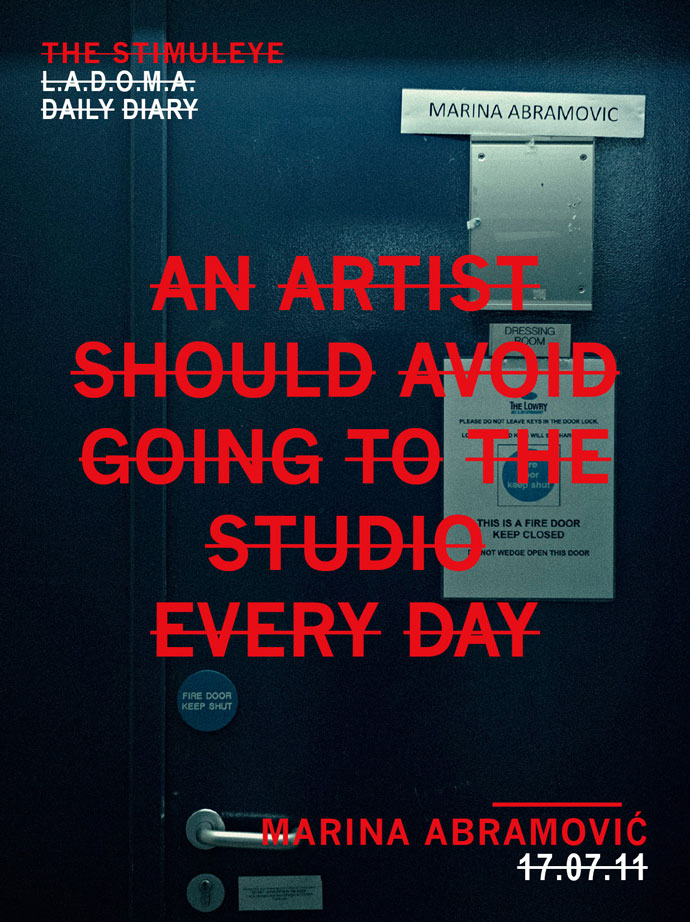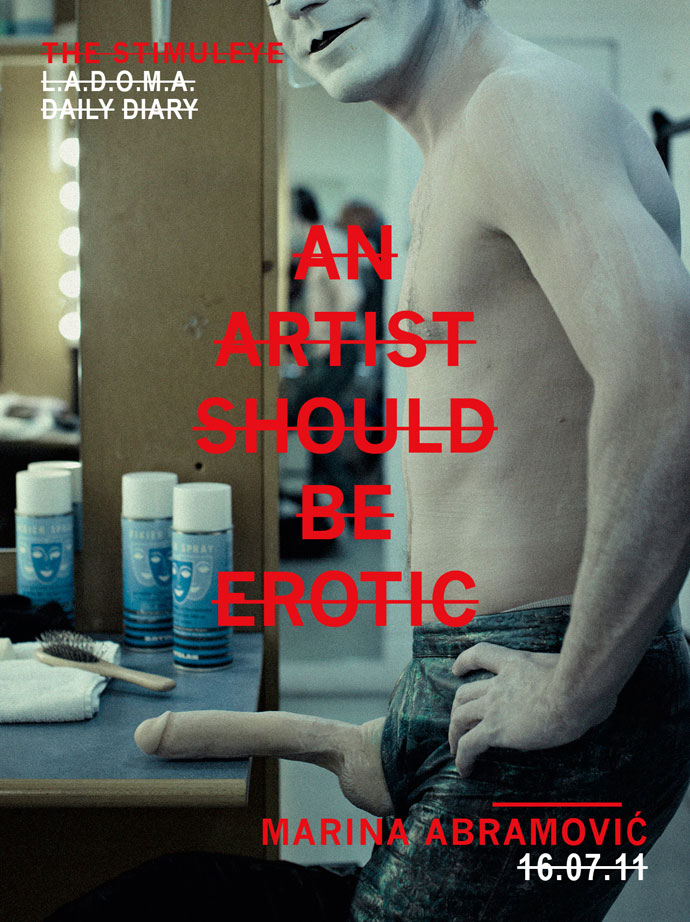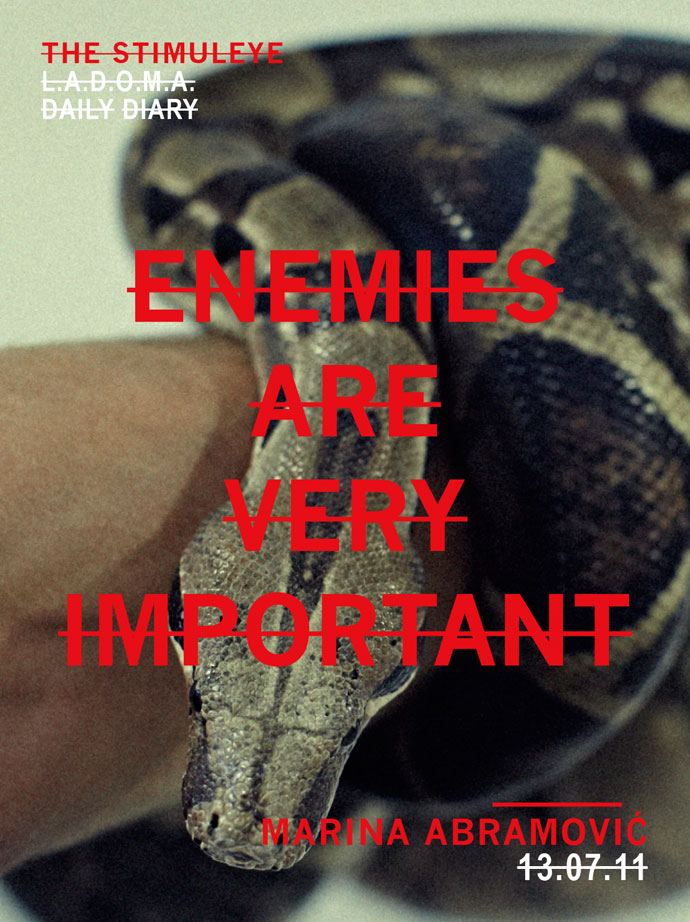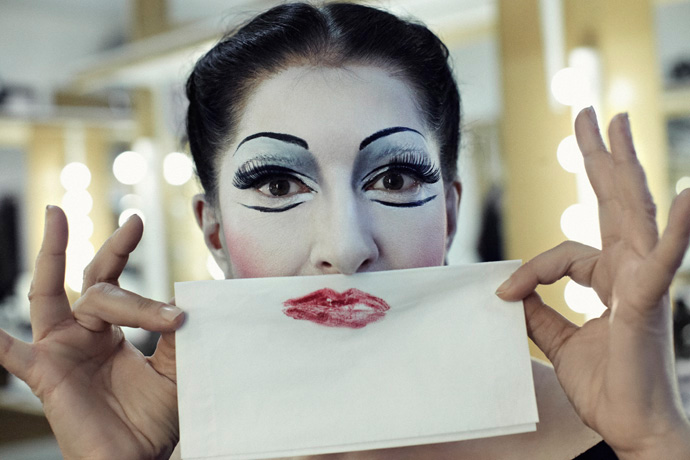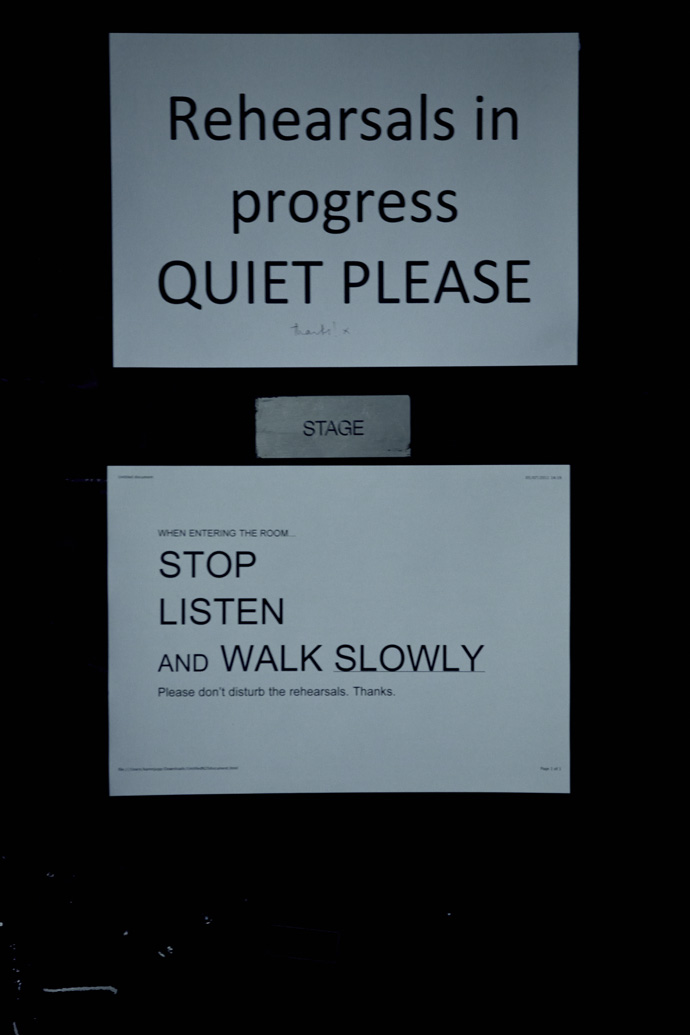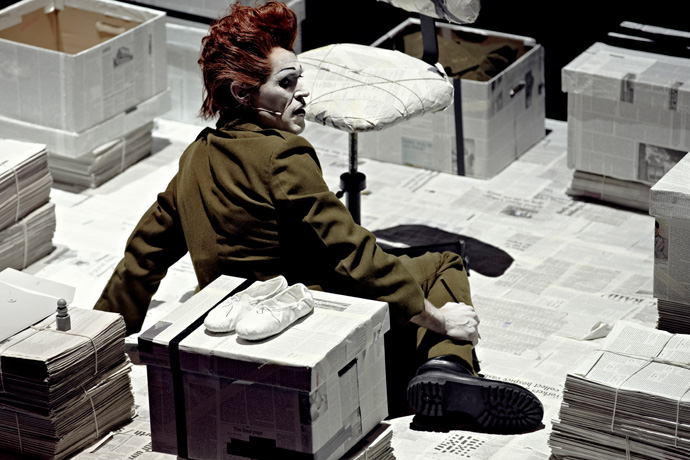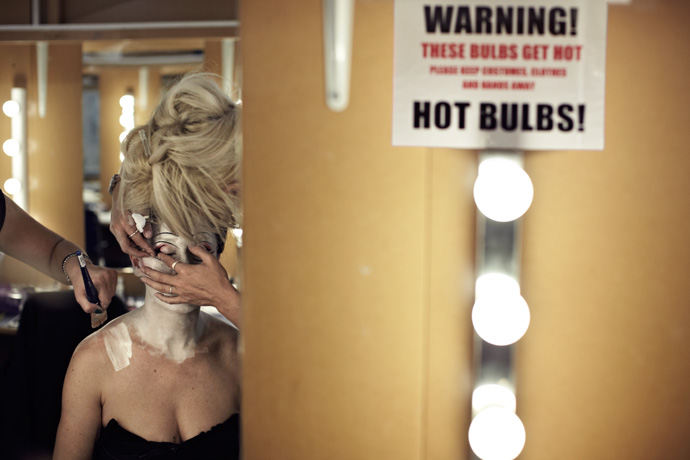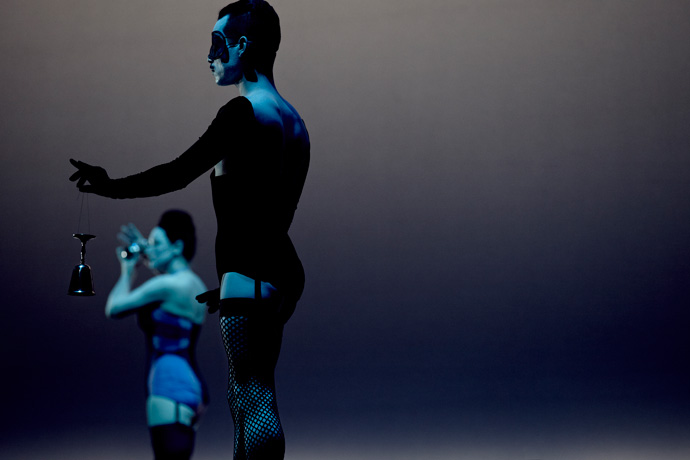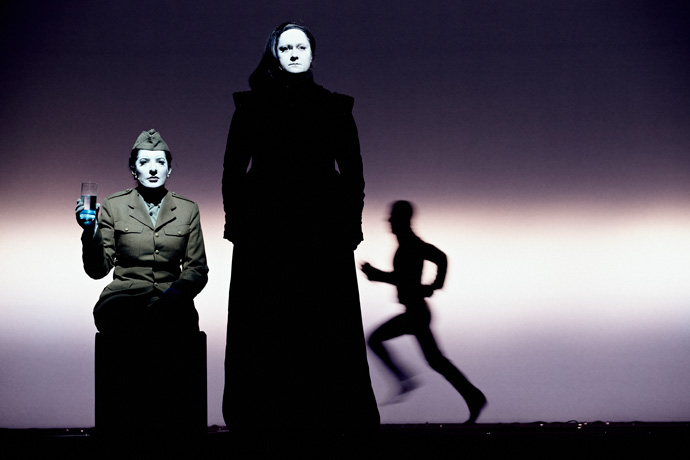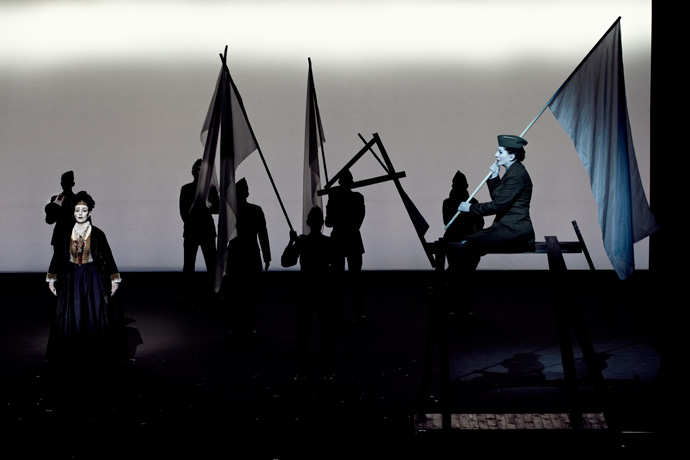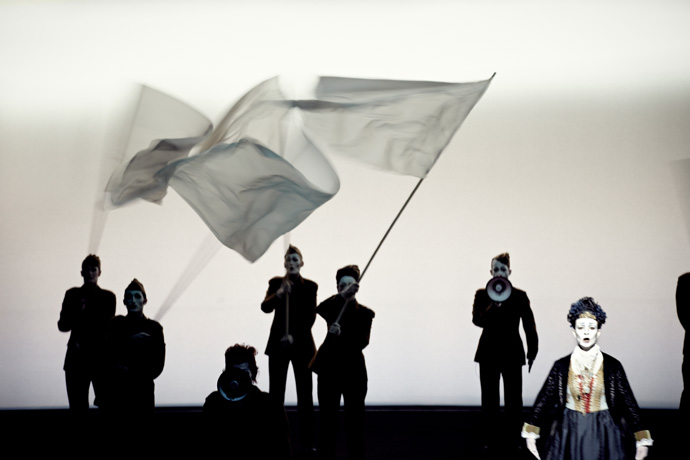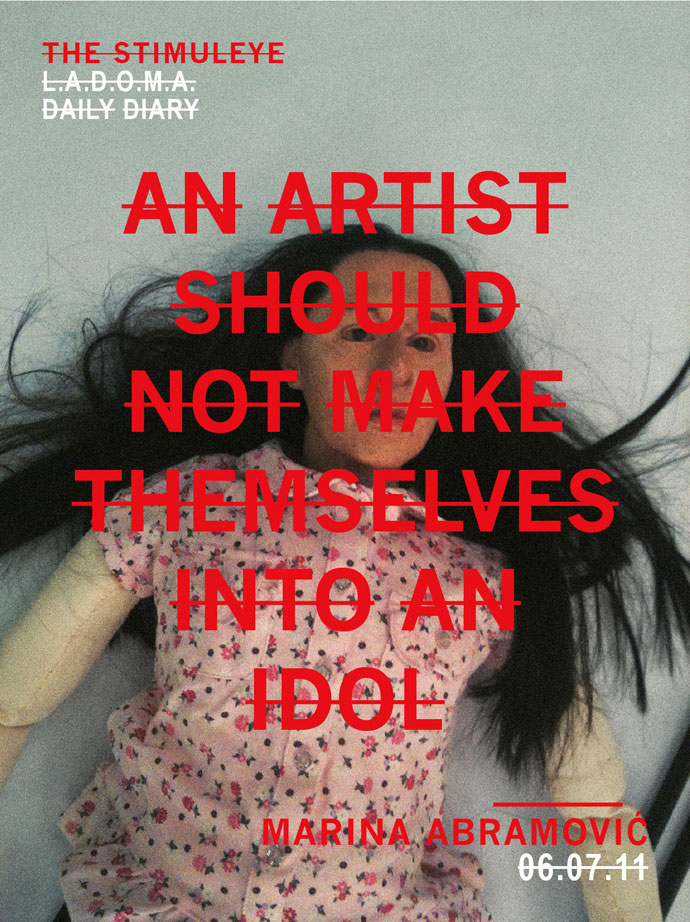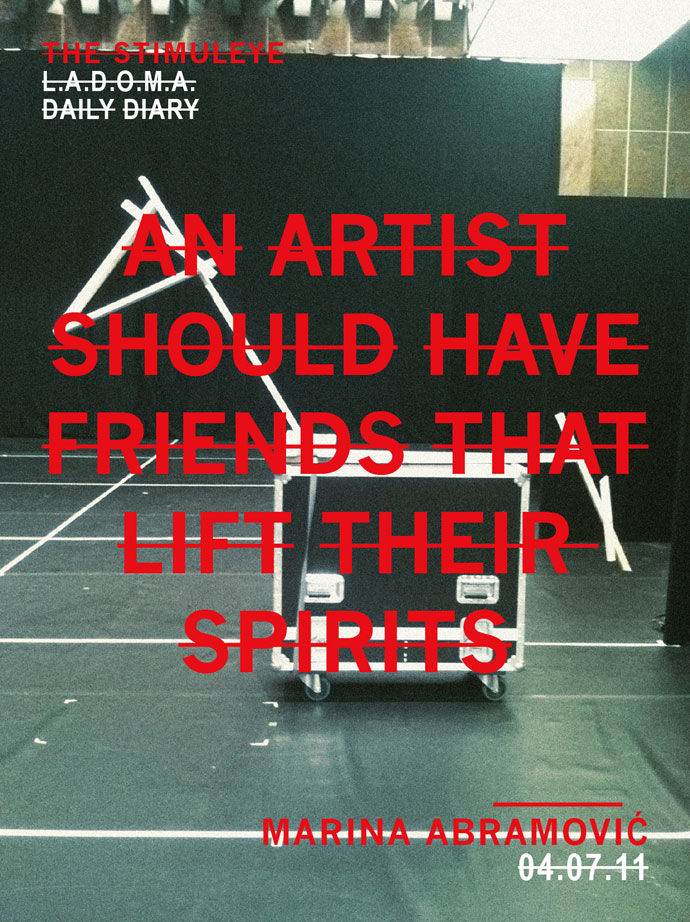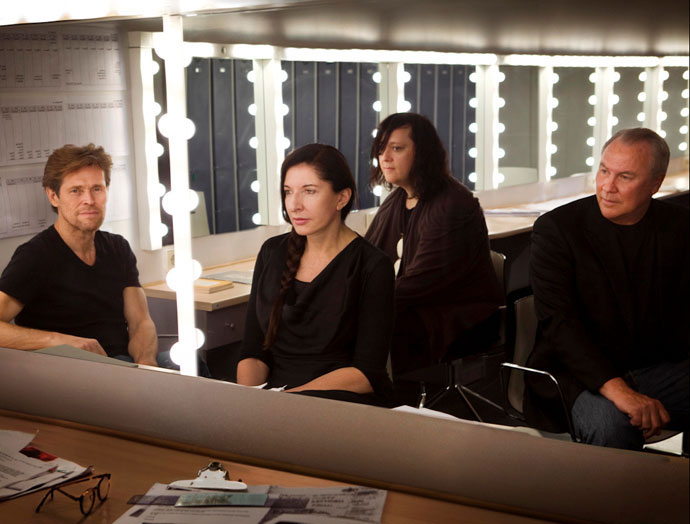-

davide balliano
-He works across many mediums, makes work and research constantly and needs to have a lot of order in his life.
New York-based Italian artist Davide Balliano had a conversation with me about his artistic trajectory, his work, rock climbing, his influences, his love of intervention and his first show in Paris at the Galerie Michel Rein.
Davide Balliano UNTITLED_Woman V Ink on book page 21x26,8 Cm 2013 Courtesy: Michel Rein Gallery, Paris
Lynsey Peisinger: Tell me a bit about your life and your path as an artist.
Davide Balliano: I was born and grew up in Torino, in the northwest of Italy. I was there until I was 18 and then I started in high school studying advertising and graphic design. It was a very peculiar school, a very specific school, which had a lot of elements that are still useful for me now. Especially the graphic design elements, the study of the image, the history of the image, art history. All of that is still informing my work today.
After that, I moved to Milan where I studied photography at Bauer, which is a fabulous school of photography. It is probably the last public school of photography that is left in Italy. What I liked of the school was the approach that they had, that I think they still have now, where rather than teaching “photography as a job”, they tried to raise us as artists working in the medium of photography. They train you as an artist who used the tool of photography. Then what you do with that tool is your choice.
Two years after school, I went to Fabrica, which is a large artist residence in Treviso, in the north east of Italy, a half hour from Venice. It is a beautiful place. A huge building built by Tadao Ando and there are usually approximately 40 artists in residence. It was very commercial-based. There is not much interest in pure artistic research. It’s more applied art. It was a very good experience–they pay you be there, they give you studio, they pay for all of your materials, they give you an apartment. You don’t have to worry about anything. But, even if it was great, it sort of crushed my relationship with photography. Fabrica had a very strong way of shaping the people that were there, so they were not making it a mystery that they couldn’t care less about the kind of photography that I was doing! I was very young, I was 21.
After Fabrica, I stayed one more year in Milano, then I got badly bored of staying in Italy. So I moved to NY in 2006. And it is in the early time in NY that I started to do other stuff. I felt that this move to NY was sort of giving me a clean cut from everything that I did until then. I sort of put photography a bit on the side and I started to draw and to intervene, but still on photographic images. I assume that because of my background in photography, I always have a difficult time starting anything from a blank background, you know from a white slate. For me, it has always been terrifying!
Davide Balliano UNTITLED_Barbaro Watercolor and acrylic on book page 18x25 Cm 2012 Courtesy: Galerie Rolando Anselmi, Berlin
LP: How did you start to move into the mediums you are working with now?
DB: So I started to print out images, mainly from the internet at that time. I still collect a lot images just for my inspiration. And I started to draw freehand on them, mainly abstract geometrical mess! Abstract scribbles, nothing with a precise meaning. Pretty soon, it sort of got clear that the issues that I had with photography were still there–even if I am intervening on top, I still had to take care very much of the meaning of the background image.
There are some images that you can just use for their mood, but there are other images that have a precise meaning that carries responsibilities. I think that this is something that you can use but you need to be conscious about it.
I always hate any kind of work in any kind of medium that just takes strong images and slams them there without standing by it. I always find that it’s a very cheap shortcut. It is something that I always hate.
So, then I started to draw on art history images because I felt that they left me more freedom somehow because there is already a big gap. You are more free to relate with the feeling of the image rather than with historical facts. The facts are there and I agree that I should deal with that, but there is a distance so there is a larger filter. So if I make a drawing on top of a portrait of a king, I should probably do research about who it is etc, but I don’t. And most people wouldn’t say “why did you make a drawing on this king and not on another one?”.
If you do the same kind of thing in photography, it is difficult because photography is such a young medium that almost any photographic image is in a historical context. So from there, the intervention grew more and more precise and became more and more essential. So if you take a drawing of four or five years ago, which was abstract and geometrical, but still messy and not so calculated, they sort of condensed somehow and at some point, it felt a need to take this intervention that I was doing on paper and put it on other mediums.
I burned that town just to see your eyes shine Wood and glass 137x48x48 Cm 2012 Courtesy: Galerie Rolando Anselmi, Berlin Photo: Nikki Brendson
LP: Tell me a bit about the medium of performance.
DB: Performance, which I do although rarely, is a different thing although I feel that it is strongly connected to….photography. It is interesting, I feel that performance is strongly connected to photography because I still feel it as the production of an image. An image that is locked by a location and by a time. I am very fascinated by the potential of making a legend with performance, not necessarily mine. Sometimes you see performances that are unrepeatable–the original work is born in one place at a specific time and if you were there, there is nothing that can repeat that moment. And it gives you something that is so unique, it sort of makes you part of the history of the work, much more than in other mediums.
Most of the time in other mediums, the work is done by an artist and then is shown. And the artwork has a life and it will be the same life for the next many many years. But a performance is in a place and in a moment and if you were there, you had the privilege of being part of it and then nothing will take that away. I find it fascinating. And I relate to it as the creation of an image, practically speaking.
LP: It sounds like performance gives you an opportunity to experience being an artist in a different way.
DB: Exactly. And also seeing what it means for other artists. It has been great because I am completely incapable of doing it in any other medium. I am sort of a control freak for anything else that I do. I know that in performance, I very much enjoy opening up to collaboration and seeing what it brings.
LP: At which point in your life did you realize that you wanted to be making art? Was it from childhood? Did you go to that graphic design school because you knew that already about yourself?
DB: Well, I will say that it depends. I always, since when I was a kid, felt an extreme need for creative expression. So I always had no doubt that I would be doing something creative in life. But, the decision to make exclusively art research sort of developed over the years. It felt like everything else just dropped and it stayed there. For all of my school time, I had the idea that it was impossible to only do that.
I always thought “I need to do something else on the side”. For example, I thought I could do graphic design while doing other work. Also with photography, but photography was even closer to making pure artwork. But it was an idealistic idea that I could be an artist but also make commercial stuff. I needed to take a decision between the two things. And I think that especially when you are young, people want one or the other.
Another thing that I understood–I sound like an old grandfather saying “when I was young…etc”! — When I was in high school I was doing a lot of rock climbing and at a certain point I had a trainer and was training five days a week. I loved it, but I liked to go out and go to concerts too. I had my social life which was very important to me. Everyone else there was like a monk about it. Just training, training, training. They ate only certain food, they were constantly on a diet. Complete dedication. I understood that I couldn’t at all put in that type of dedication and I couldn’t compete with people that were that dedicated to it. And later, I felt the same way with photography.
If you are trying to do something good, you should consider that most likely there is somebody else that is trying to do it and he is going to be very good at it and he is going to put all his energy into it, he is going to make tons of sacrifices and he is going to go through hell to achieve it. So if you are not up for that, you are in for a competition that will never bring you anywhere. So photography for me was sort of like that.
I was in Milano therefore everything was about fashion photography. I mean, fashion photography was fun! I would go to a set, with models and people and music. It’s all fun. But if you are trying to do it, you are in competition with 500 kids obsessed with their freaking portfolios who are putting their money into making fashion photography. I’m like “hell no”! I have to be paid to make fashion photography, not the other way around. People would tell me that I had to put together a fashion photography portfolio and then when people look at you because of that, you bring in your art research. But for me, I knew I would not have the energy to do that because I was already putting all my energy into my research. And I sort of became clear that it wouldn’t work. I had to push on thing or the other.
So I decided only to concentrate on art. I assisted for many years. I wanted to learn from an artist. I wanted to learn about art-making and also the practical side of it.
Davide Balliano UNTITLED_Grid27 Acrylic on linen 120x180 Cm 2012
LP: When you came to NY, you assisted Marina Abramovic for four years. How did that experience influence your work and how did it prepare you for your own path as an artist?
DB: For me, Marina was like my own private university. She taught me everything that I know about surviving as an artist.
Independently of the love that I have of her work–I approached her because I always had an extreme fascination with her work– the privilege that I had when working with her was that I was in contact with the private side of her. And what I gained from the private relationship is to see how she is completely dedicated to her work. Marina is all work. And there is an insane amount of energy and dedication that she puts into it. Her work is her life, there is no separation, there is no in between.
The personal investment that she makes in her work, I assume gives her this concentration that comes out so clearly in the work. And, other than that, she is such a big artists that if you work with her for four years, afterwards you can truly do anything. I came out of that experience being practically scared of nothing.
Marina works at such a level of intensity that there is really nothing that you can’t do after that. It is like boot camp. You are so used to working under pressure –good pressure, but pressure–daily. Everyday was the same amount of concentration and speed and pressure. The responsibilities are always big. There is never a day that you go and pick up flowers! Every day is something big, something important, something that you can’t mess up. When you do that every day for four years, you come out and truly its like those American movies about Marines. You can really do anything!
LP: You seem to have an approach to your work that is extremely organized and structured. It seems to me that are an artist who approaches your work like one might approach any business in terms of how you structure and use your time and also how you interact with and deal with people. I wonder if working with Marina influenced that or if you were always someone who could self-motivate and give order to your life.
DB: Definitely working with Marina, and my other assistant jobs, gave me that structure. Marina is naturally 80 percent of it, but everything contributed. Assisting fashion photographers meant being efficient and fast. There are a lot of responsibilities and you have to work under pressure, so you get used to needing to maintain focus. Keeping your concentration on the work itself under all the pressure seems to me to be the secret that all of these big guys shared.
There are tons of different kinds of artists and I know fabulous artists that work in complete chaos and it’s fine for them. Their art can come out of that. They can do nothing for weeks and then disappear and work day and night for a month and then come out like drained zombies, but the resulting work is marvelous.
But that’s not for me. The less I do, the more in pain I feel.
Davide Balliano PICATRIX, installation view Courtesy: Michel Rein Gallery, Paris
LP: Tell me about that show in Paris.
DB: The show in Paris started with an invitation from Eugenio Viola, a wonderful curator that I worked with last January. He invited me to have this little show and he set the theme of the show. He asked me to work with the concepts of alchemy and symbolism and sort of esoteric feelings, which is something that is present in my work even if I don’t always relate to those things in my life.
There are four works on paper, two paintings on board and one sculpture. We see a combination of different mediums and the dialogue that they have with each other, which is very important for me. I never make a show that deals with only one medium because it feels like a small part of what I do. I feel like I can’t say what I want to say with one medium, I have to put them together.
In the past Alchemy was called “the great work” and I love it. I like the utopic idea that through my work, and the elements given to me, I can control these elements and have a higher understanding of who I am and a higher consciousness.
Eugenio asked me to consider these things and to put together a little show that gives my view on these topics, so I did.
LP: What is the last thing that stimulated you?
DB: The film The Turin Horse by Bela Tarr. It is really stuck in my mind and I keep on thinking about it. It was very very strong for me. And not because I am from Turin! Its strict and minimal and powerful and its a complete tragedy. There is no space for hope, no space for light, like a classic tragedy. Everything is rotting and closing in on you. Sometimes I feel that tragedy might be more inspiring than happy thoughts. Happy thoughts are private while tragedy can be shared and if you recognize the suffering in someone else, it can make you feel less alone in your own troubles. That is probably why all of the work that I strongly admire has a heavy portion of tragedy and weight.
PICATRIX at Galerie Michel Rein, curated by Eugenio Viola
http://michelrein.com/
http://www.davideballiano.com/00 -

An artist should not make himself into an idol
-Marina Abramović is everywhere lately.
A marathon performance at MoMa, another retrospective in Moscow, on the cover of POP magazine, hosting a star studded event at Jeffrey Deitch’s MOCA in LA and an exhibition at The Serpentine Gallery slated for 2012, the HBO documentary “The Artist is Present” just screened at Sundance. An ever growing list of projects that is taking her across continents…
Exclusive long form of interview first published in POP magazine FW2012
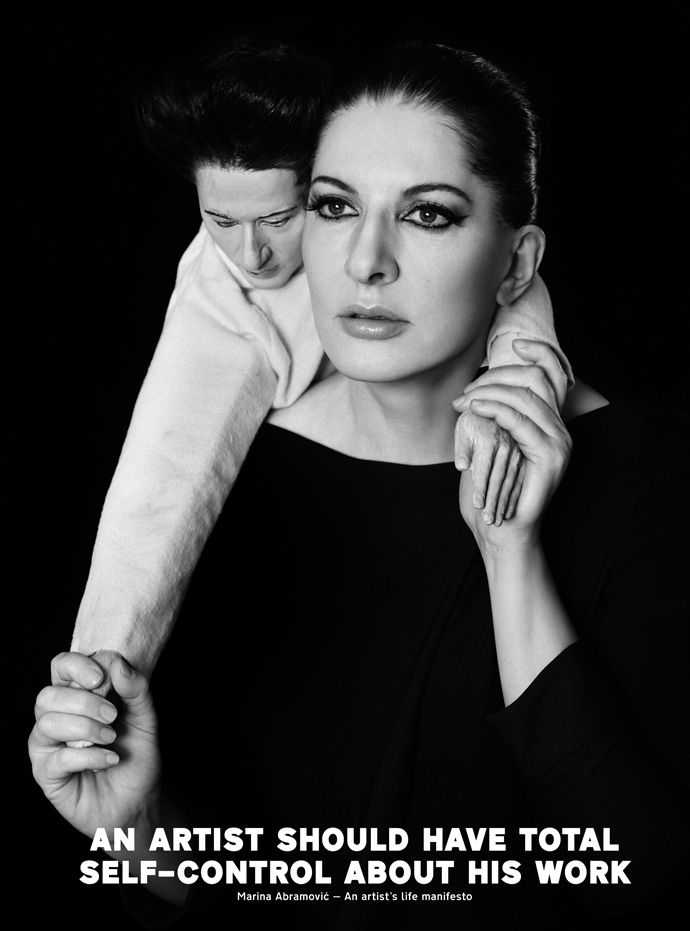 Marina Abramović with her "Mini Me". Photography by René Habermacher for POP magazine
Marina Abramović with her "Mini Me". Photography by René Habermacher for POP magazine
Marina Abramović is everywhere lately. She has emerged from what was considered an alternative section of contemporary art, Performance Art, to finally occupy an untouchable position in the Pantheon of Pop.
A marathon performance at the MoMa, another retrospective in Moscow scheduled, and an exhibition at The Serpentine Gallery slated for 2012, day and night filming of an HBO documentary and an ever growing list of projects. Marina is known for her works in which she tests and pushes her emotional,mental and physical strength, but her schedule takes its toll: Marina is exhausted.
Broad recognition has come comparably late for Abramović, who was often categorized as some sort of Exotic Serbian Vixen. Nevertheless, she has shaped a significant slice of art history like no other.
Today, less considered for her public sexual identity, and more appreciated for her timelessness and her bravery, one could unarguably call Marina “the diva of contemporary art”, were she not so grounded.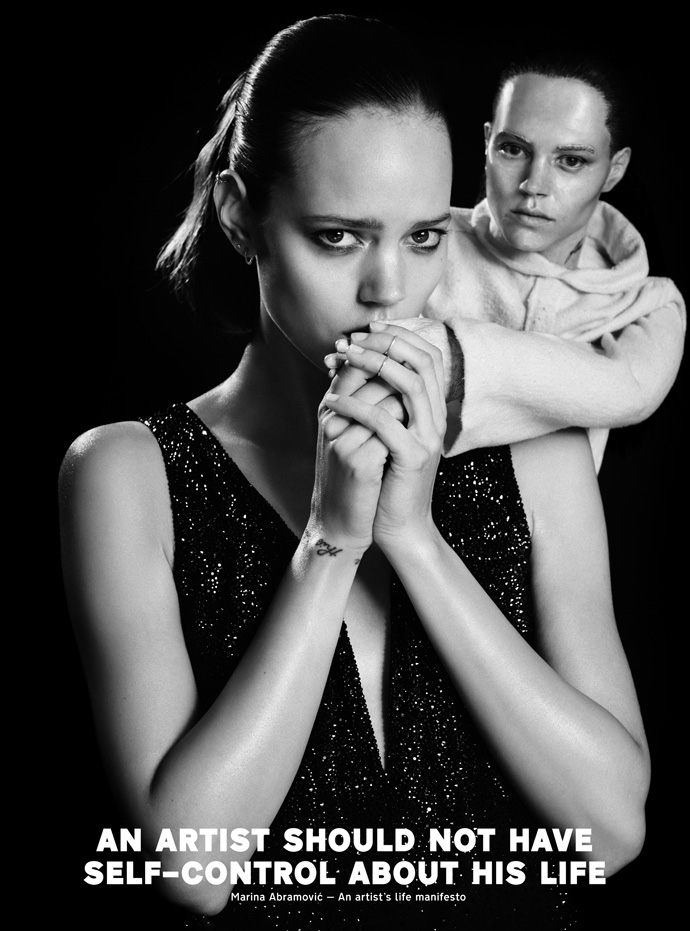 Freja Beha Erichsen with her "Mini Me". A collaboration by Marina Abramović for POP magazine
Photography by René Habermacher
Freja Beha Erichsen with her "Mini Me". A collaboration by Marina Abramović for POP magazine
Photography by René HabermacherOur conversation takes place just after Marina’s return to New York from Manchester, England where she spent six weeks collaborating with Robert Wilson on a new biography, “The Life and Death of Marina Abramović”. The play was staged with accompanied music written and conducted by Antony (of Antony and the Johnsons) and narrated by a ferocious Willem Dafoe.
The audience witnessed him meticulously rummaging through the details of her life chronologically. Marina has been clear about her lack of appreciation for theatre as a concept and this play marks a sharp departure from her concept of herself as a performance artist.She participates in what she used to essentially despise: “To be a performance artist, you have to hate theatre. Theatre is fake: there is a black box, you pay for a ticket, and you sit in the dark and see somebody playing somebody else’s life. The knife is not real, the blood is not real, and the emotions are not real. Performance is just the opposite: the knife is real, the blood is real, and the emotions are real. It’s a very different concept. It’s about true reality.”
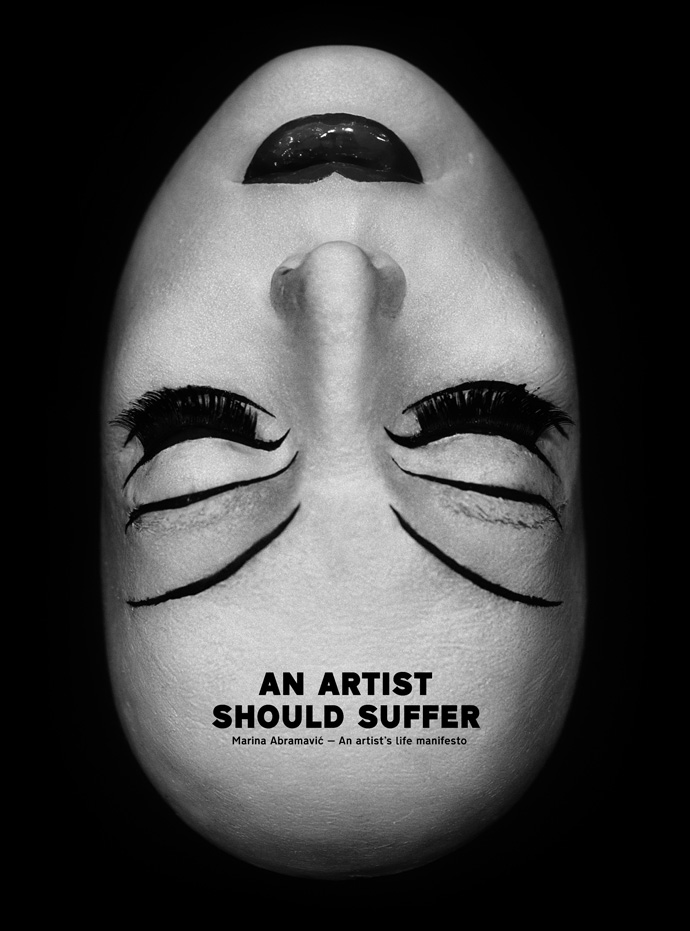 Death mask of Marina Abramović. Photography by René Habermacher
Death mask of Marina Abramović. Photography by René HabermacherRené Habermacher: With this piece you staged something that you call artificial theatre. It lacks the realness that is central to your work. How was this experience for you?
Marina Abramović: I am his material. I completely gave all the control to Bob (Robert Wilson). That is the only way to really be material for someone else, which is very interesting, because its just absolutely the opposite of what I do. This is first time that i have this really radical approach with Bob – he absolutely refused anything to do with performance. This was an amazing experience for me and very difficult, because his approach to rehearsal is like mine to performance, – but yet it’s just rehearsal! Just be there for hours and hours in order for him to fix the light. I lose my reason, I need the public, I need another kind of dialogue. This was a huge discipline not to kill him!
RH: How did this project with Bob come together? (more…)
-

the end of summer hypernation
-The Stimuleye is back from summer hyper-hybernation.
After a galloping transatlantic spiral of frenzy, we lay exhausted for days on various shores around the globe. Meanwhile, not entirely lazy, some of the Stimuleyes danced away in Watermill or invented a bookclub of a new, performative kind, shuffling readings of MANHUNT, STILETTO and Jackie Collins’ masterpiece THE STUD into a new, exciting bootleg. But more about that later.
During this hot days another Stimuleye project rushed through printers rotation: a collaboration with Marina Abramović featuring Freja Beha Erichsen photographed by René Habermacher for POP magazine.

 Freja Beha Erichsen and Marina Abramović, both posing with Marinas "mini-me" and wearing GIORGIO ARMANI
Photography by René Habermacher
Freja Beha Erichsen and Marina Abramović, both posing with Marinas "mini-me" and wearing GIORGIO ARMANI
Photography by René HabermacherThe Fall Issue will feature 2 covers with Marina and Freja and an inside story with exclusive interview, plus a limited edition hardback showing Marina’s death mask. Some of our fellow readers might recognise another co-star: yes, it’s Daisy the Boa which we met in Manchester, in an attempt to strangle the alter ego of Marina, her “mini-me”.
Coming soon to the newstands, the new POP is investigating this time THE REDEFINITION OF THE LADY. As Ashley Heath, its publisher puts it:
“POP has been exploring the notion of a very particular kind of modern fashionable woman. But it’s shifting all the time in such an interesting way. There’s a very liberated, new-world perspective to it and I think Marina Abramovic taps into that. She’s a figure who will only continue to grow in influence I believe. You hesitate to use the word ‘icon’ these days, but Marina and Freja are both resonant female role models at a time when lowest common denominator so often rules the day”
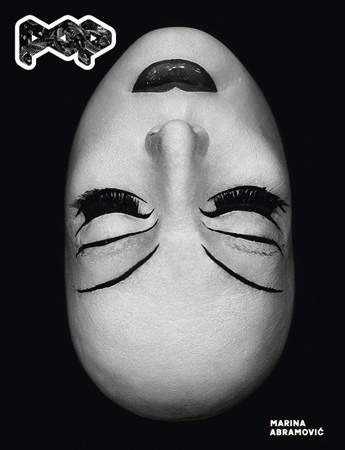
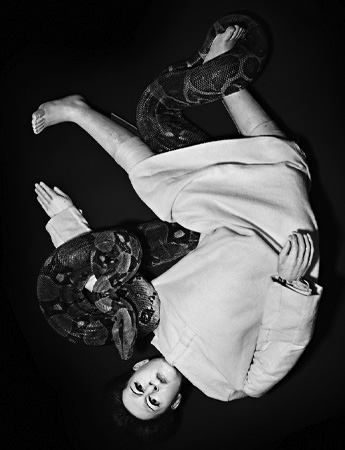 POP's Special edition Hardcover with Marina Abramović's death mask and "mini-me" wrestling with Daisy.
Photography by René Habermacher
POP's Special edition Hardcover with Marina Abramović's death mask and "mini-me" wrestling with Daisy.
Photography by René HabermacherMARINA CREDITS: Styling Isabelle Kountoure , Hair by Chi Wong at Julian Watson Agency using Shu Uemura Art of Hair, Make-up Yannis Siskos at Effex using Giorgio Armani Cosmetics, Photography Assistance Jonathan Flanders & Hannan Jones, Digital Remastering The Stimuleye, Snake Wrangler David Steward for Creature Feature, Production Lynsey Peisinger for The Stimuleye
FREJA CREDITS: Styling Isabelle Kountoure, Hair Peter Gray at The Collective using Shu Uemura Art of Hair, Make up Romy Soleimani at Management Artists, Manicure Tracelee Percival at Vue using Priti NYC, Model Freja Beha Erichsen at IMG New York, Casting Angus Munro at AM Casting, Streeters NY, Photography Assistance Cesar Rebollar, Fashion Assistance Jodie Latham, Stephanie Waknine, Rebecca Sammon & Michaela Dosamantes, Digital Technician Dilek Islidak, Digital Remastering The Stimuleye, Set Design Anne Koch at CLM NY, Production John Engstrom at Scheimpflüg Digital, Shot at Eagles Nest Daylight Studios NYC
-

Life and Death of Marina Abramovic – vii
-“An artist should avoid going to the studio every day”
STUDIO
Last night was the last performance in Manchester.Everyone in the cast and crew will soon be returning to their “normal” life, wherever it may be around the globe, to their city, their apartment, their studio.
Over the last week, seven exhausting nights, the play is ending.
It has been seen by Viktor & Rolf, Riccardo Tisci, the director of the MoMA and many others.But fear not, it will return, soon, somewhere else around the globe.
-

life and death of marina abramovic – vi
-Marina's 6th commandment. Photo by René Habermacher.
DICK
This is not a dick.
It’s a strap-on.
It’s strapped on a man, Andy.In the play, Andy masturbates while wearing a mask of Marina, as she flirts with him.
Tonight is the last night to see this, as it is the last night the play is performed in Manchester.
-

LIFE AND DEATH OF MARINA ABRAMOVIC – V
-“An artist should stay for long periods of time at exploding volcanoes”

Marina's fifth commandment. Photo by René Habermacher.
THE WIG
This is the wig of Willem Dafoe when it’s not on Willem Dafoe.
It’s in the make up room.In the play, Willem appears as a demonic, cartoonish narrator, meticulously going through Marina’s life chronologically, year after year.
-

LIFE AND DEATH OF MARINA ABRAMOVIC – IV
-“Enemies are very important”
Marina's fourth commandment. Photo by René Habermacher.
THE SNAKE
After an energetic premiere, the play keeps running until the 16th.One of the cast we havent yet introduced is Daisy, the boa constrictor.
Like bruno’s predecessor was stiffy, Daisy replaced the rolled-up blanket used for rehearsals.She naps in her well temperated box towards the minutes of spotlight.
It was difficult to find a hotel for her, says David the “snake-man”, so many houses had refused them shelter…Daisy and David. Photo by René Habermacher.
-

-

LIFE AND DEATH OF MARINA ABRAMOVIC – LAST REHEARSAL
-Marina, Willem, Bob, Carlos and the Serbian girls.
Only a few more hours left to marinate, before the feast.The stage doors. The note is to be taken very serious. Photography by René Habermacher.
Today Marina had her shaman coming from Santa Fe, New Mexico, in order to clear any bad spirits in the theater.
Magick is in the air, the mood has eased the morning following the preview.
Some eruptions excluded.Willem Dafoe noting remarks on his text. Photography by René Habermacher.
Preparations in the Make up rooms. Photography by René Habermacher.
After all, the puzzle of endless rehearsed scenes makes sense now, its emotional power in effect to captivate both spectators and cast.
As the premiere nears, the ticket office and press department whirl faster.
During breaks, we hear big names to will attend.
They have to be seated the right way. Tickets are limited and getting sparse.Carlos Soto. Photography by René Habermacher
Marina Abramović and Antony Hegarty. Photography by René Habermacher.
The Serbian girls, that form the chorus with peasant songs, cook and cater everyone with traditional baked beans.
The longer they marinate, the better they are supposed to get. Though the longer you leave the beans to marinate, the higher the risk of having your portion snapped away – perhaps we should put name tags on the glasses in the backstage fridge?
Anyway, it’s all about MARINAting. The effect is, it melts on the tongue….
Marina riding on her wooden horse Bruno. Bruno is a darling, but not too comfortable... Photography by René Habermacher.
Svetlana sings the chorus while the soldiers shout parts of Marinas artist's manifesto. Photography by René Habermacher.
Life And Death Of Marina Abramovic
at Manchester International Festival
July 9 – 16, 2011. -

LIFE AND DEATH OF MARINA ABRAMOVIC – III
-“An artist should not make themselves into an idol”
Marina's commandment III. Photo by Lynsey Peisinger.
MINI-MARINA
Mini-Marina is a doll that wears Marina’s own, real hair.It just flew in from New York City.
The costume department is working on dressing Mini-Marina for the premiere…
Life And Death Of Marina Abramovic
at Manchester International Festival
July 9 – 16, 2011. -

LIFE AND DEATH OF MARINA ABRAMOVIC – II
-“An artist has to be aware of his own mortality”
Marina's Commandment II. Photo by Lynsey Peisinger.
MASK
Its raining in Manchester. Although sometimes not.The first preview went on stage under the roof of that building where his architect threw himself from his landmark tower to death.
Marina thinks there must be some energy left from this.At Marina’s funeral, who do you expect to see in the coffin? Marina, obviously. Since we have three people in both of Marina’s funeral scenes, they decided to make everyone wear “Marina masks” so that everyone would look like her.
We call them “Marina Death Masks”. They looked much more morbid before they put makeup on them…
-

LIFE AND DEATH OF MARINA ABRAMOVIC : GUNPLAY
-Four more days to go until the premiere. The rehearsals proceed until late at night with great concentration. After four weeks of work, the cast, creative team and crew are almost ready for the first preview tonight. Bob Wilson, Marina Abramovic, Willem Dafoe and Antony Hegarty. An ensemble this beautiful doesn’t happen very often, perhaps just once in a lifetime.
The premiere is just hours away. Bob is orchestrating his cast and crew and the multi chromatic illumination of the play. Antony continues to conduct the music, snapping the tempo for the band while singing on stage. Willem recites his text in an endless mantra, a flood of whispers. His face and body moving through their various expressions. There is tension under the roof of the Lyric Theatre at the Lowry in Manchester. There have been troubles and tears and there have been shiny moments of camaraderie and playfulness, all in an effort to tell you a story. The story of Marina’s life. It is a story that will carve out a space for her in your heart forever…
Now, we go into our last rehearsal before the preview. The vultures are flying, Marina is slipping into her red, feathered dress and Bob….well, Bob is setting light cues.
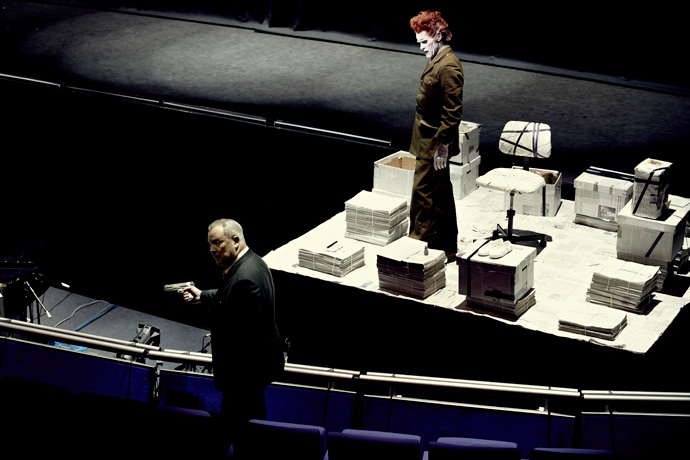 Robert Wilson instructs Wilem Dafoe in Gunplays. Photo by René Habermacher
Robert Wilson instructs Wilem Dafoe in Gunplays. Photo by René Habermacher
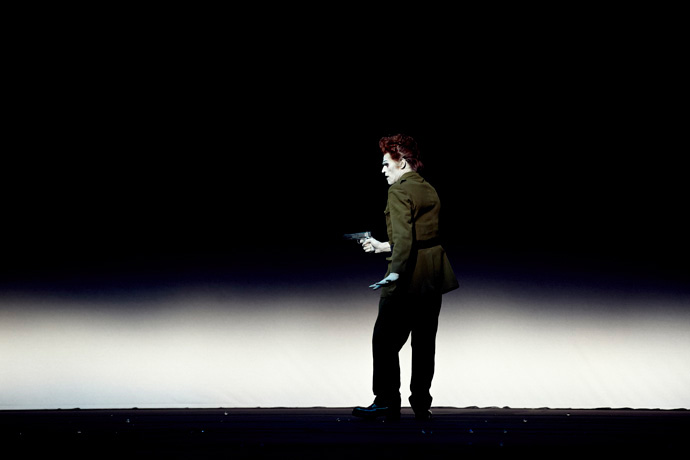 How Willem plays the gun. Photography by René Habermacher
How Willem plays the gun. Photography by René Habermacher
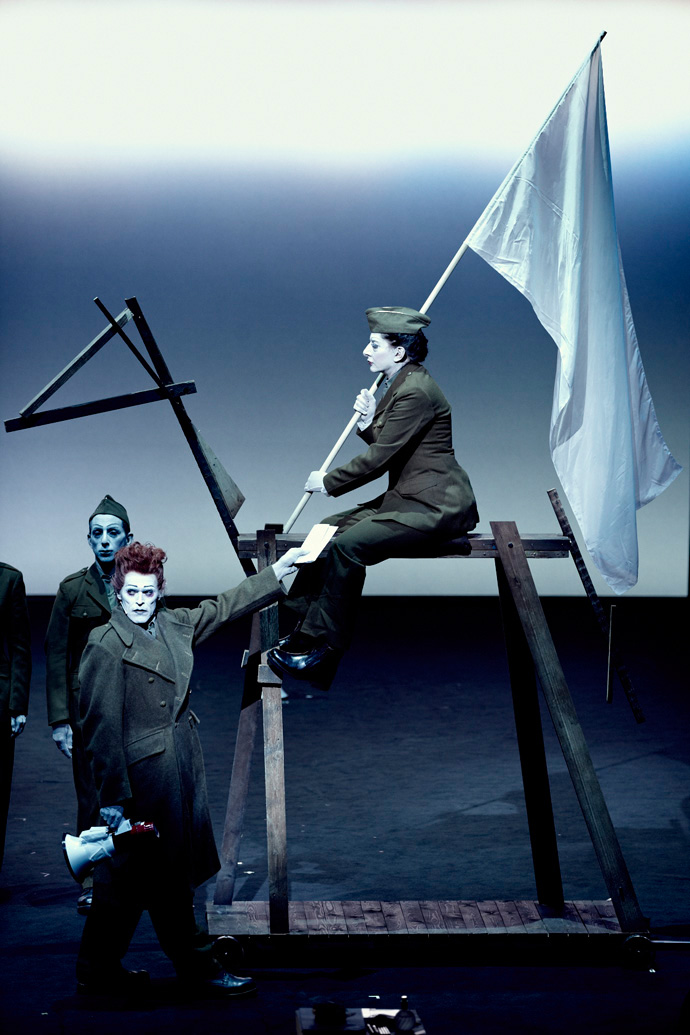 And finally on stage: "Bruno" as Marina calls him is the new Horse that replaces "Stiffy".
So here Bruno, Willem and Marina. Photography by René Habermacher
And finally on stage: "Bruno" as Marina calls him is the new Horse that replaces "Stiffy".
So here Bruno, Willem and Marina. Photography by René Habermacher -

LIFE AND DEATH OF MARINA ABRAMOVIC – I
-“An artist should have friends that lift their spirits”
Marina's commandment I . Picture by Lynsey Peisinger.
STIFFY
The first three weeks of rehearsals were held in a rehearsal space where we used temporary props and stand-in animals.Stiffy (aptly named by Willem Dafoe) was Marina’s stand in horse. We miss Stiffy now that we are at the theatre and the “real” horse has arrived.
He had a very wide body and Marina had to walk like a cowboy after sitting on him for too long.
But he was good to Marina for those weeks.Life And Death Of Marina Abramovic
at Manchester International Festival
July 9 – 16, 2011. -

ANNOUNCING THE LIFE AND DEATH OF MARINA ABRAMOVIC – MIF DAILY DIARY
-The Stimuleye is proud to be announce the upcoming series “The Life and Death of Marina Abramovitch” – MIF Daily Diary.
Under the direction of Robert Wilson, and with the participation of Antony Hegarty, Willem Dafoe and, of course, Marina Abramovic, this exceptional performance will run July 9 to 16, 2011 at Manchester International Festival, but you’ll be able to follow all the preparations right here, on the The Stimuleye.
Stay tuned…
Willem Dafoe, Marina Abramovic, Antony Hegarty and Robert Wilson. Photo by Antony Crook.
Life And Death Of Marina Abramovic
at Manchester International Festival
July 9 – 16, 2011. -

dimitris papaioannou : the wandering kouros
-THE WANDERING KOUROS
In the last part of our conversation Dimitris Papaioannou speaks about his current project INSIDE that premieres in April at the Pallas Thatre in Athens
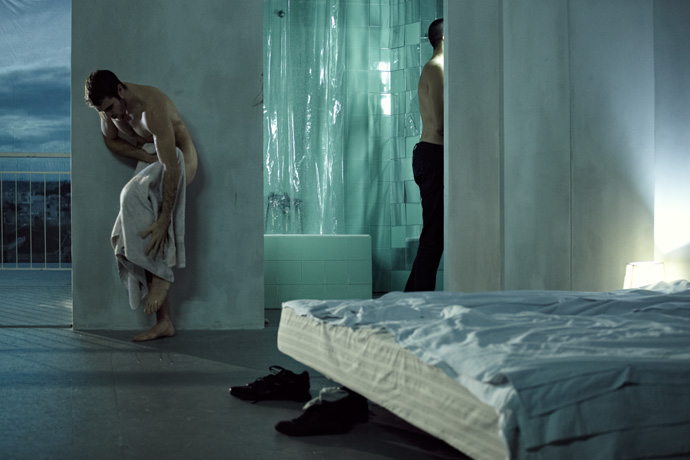 Scene from INSIDE by Dimitris Papaioannou. Photo by René Habermacher
Scene from INSIDE by Dimitris Papaioannou. Photo by René Habermacher
RENE HABERMACHER: Let’s speak a little about your new play: INSIDE.DIMITRIS PAPAIOANNOU: INSIDE is a work born where two situations come together. The first is a show that runs endlessly without beginning, middle or end. The second is a situation in which audiences are allowed to visit at any time they like, sit wherever like, and are free to leave and return as many times as they like. The theatre doors open at 17:30 and close at 23:30. The stage action begins before you come in, and continues after you leave. Nobody sees a beginning, or an end. The play recycles itself, but never repeats itself.
We are playing with the concept of empty time. INSIDE focuses on personal time, that series of moments we experience when we return home. In a way it monumentalises these moments: the very fact of eating, or the very fact of showering, or the very fact of undressing to go to sleep. And without any assistance from civilisation — without a book, a magazine, radio or television.
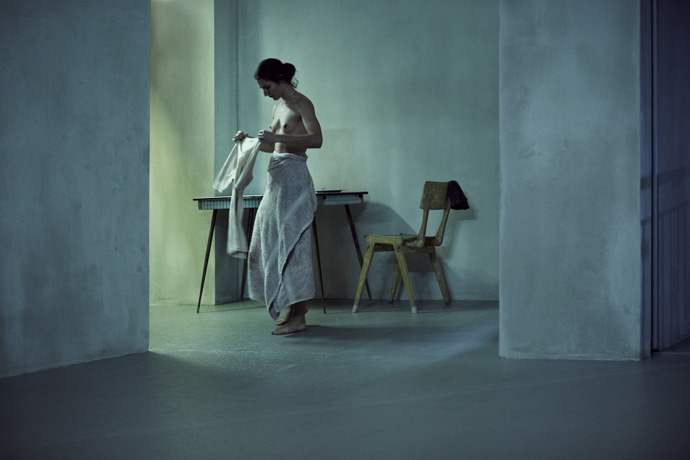
Scene from INSIDE by Dimitris Papaioannou. Photo by René HabermacherWhat you see is a composition, a series of everyday private movements and actions that are exactly the same, repeated multiple times by 30 performers in various overlapping and recycled versions. These phrases come together, then one remains, then another five come into play. It’s about density and overlapping forms. An ongoing open composition that encourages audiences to create their own compositions, depending on how many times, how long and from which angle they choose to see the play.
This is an idea that intrigues me, that people in the centre of the city will visit a theatre to watch others doing things that they do themselves, and the people they watch are themselves watching the city through the window. This is something I feel is charming.
It is these two elements — that of the city documentary exploring a place common to all, and the freedom given to audiences as to how they can view the work — that come together in my view to create this project. The subject of it is one level, the form of it is another, and both are conceived at the same time. This is what interests me, and this is why I am doing it.
So this is what INSIDE is.
I don’t know what people are going to do and how audiences will make use of this game that I am proposing. It’s something of an experiment, we’ll see how it’ll work.
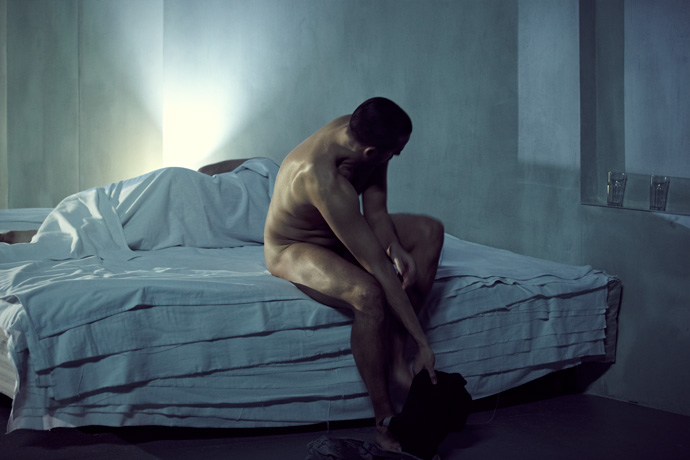
Scene from INSIDE by Dimitris Papaioannou. Photo by René HabermacherIt reminds me of the photographs of Eadweard Muybridge for example, or the performances of Marina Abramović.
Abramović has these elements of patience, and of exhausting the human body. She has done one performance [“The House with the Ocean View”, 2002] where she actually lived in a gallery, in public view, which resembles what I am doing. But my work is not performance art, it requires rehearsal and it will repeat itself everyday; it’s not like an algorithm that evolves organically in front of our eyes. That’s why we are doing it in a theatre and not in a museum or gallery, because it is a kind of a twisted version of a performance, but not performance art. It is something that is rehearsed, that has an acting tone, and is not personal like most performance art, which is about a specific person doing something in that moment. Of course, this experiment of mine would not have been possible if performance art had never existed.
INSIDE reminds you of Muybridge because it gives you the chance to see and imprint in your head the successive stages of a movement, just like Muybridge did in his photographs. They also share the element of observing people: how people move, how they walk.
It’s like filming a documentary in the savannah: you film for hours following a lion and then you have 15 minutes where the lion sits doing nothing. We are taking these 15 minutes of footage of the lion making slight movements and superimposing it many times, through shifts in the timing, to create an entire play out of it. It is still the lion. It’s still about observing the lion. The lion does nothing new. But hopefully we will be magnetised by these successive of layers of the same action taking place, and start meditating upon our own lives.
That was a good example! We are becoming very abstract and intellectual now.
I can’t help it!
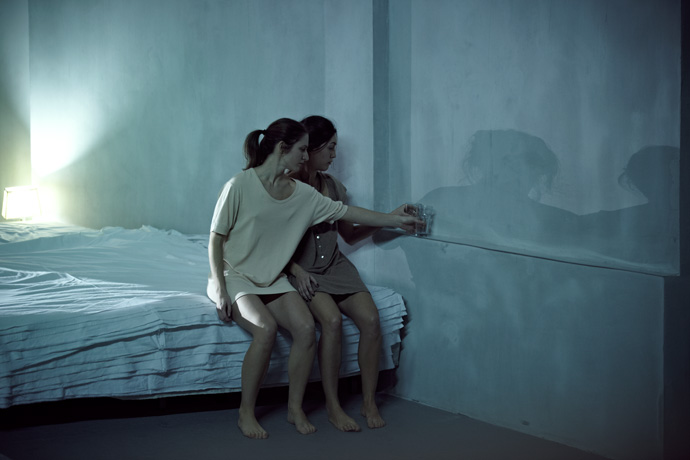
Scene from INSIDE by Dimitris Papaioannou. Photo by René HabermacherI understand that this idea for INSIDE has been in your head for quite a while now.
It was the first thing that came into my head after 2004, the first thing I wanted to do and found worth doing. Back then I had the idea of this room, and of creating a composition from a single simple series of movements by multiplying and superimposing it. Within the framework of a two-hour show, this seemed ridiculous — this limitation would have strangled the idea, forcing the whole thing to have a conclusion, a climax, a very specific story to tell. It would also seem like a joke to audiences, setting them up for something with a beginning, middle and end and then presenting them this thing repeating itself and multiplying, waxing and waning before their eyes, without giving them the chance to leave whenever they want. So I didn’t do it.
Last year, I made the leap in relation to the way the theatre itself could function: I could create a very long show and give people the freedom to come and go as they please. I had to deal with the logistics of the thing, but then suddenly a form was created in which this content could take place. Because once you liberate the audience from having to see it all, then you also liberate the show itself to develop in ways that do not necessarily lead to a defined conclusion. So that is why it is happening now, because it took me some time to conceive the framework within which this could function.
Official trailer for INSIDE.
There are some recurrent elements that I always see on your mood boards, in your work, in your references, and last week I saw a key element once again: the kouros.
Yes!
That one always returns, either standing or fallen.
I deeply apologise, I cannot help it! Some things come back again and again, you know, until everybody will just be exhausted by it and nobody will ever visit anything I do ever again!
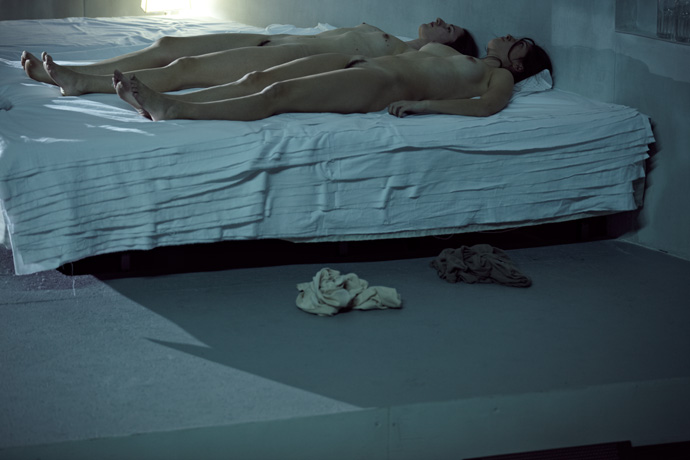
Scene from INSIDE by Dimitris Papaioannou. Photo by René HabermacherWould you say you have an obsession with what the kouros represents: beauty, nobility, youth?
It’s not about youth. It just happens that I work with people who are quite young. I’ve never flinched from the idea of worshipping the structure of a human body: I like the body. I like looking at human bodies. There is something about beauty that charms me and puzzles me and magnetises me.
I have a certain understanding of the human presence, of the human body situated in space and against the vastness of the sky of existence. I usually have people looking at landscapes. I think in every play I’ve done, I’ve had someone looking at something. This is something that maybe comes from me: I tend to breathe things in by looking at them.
When the kouros came to ancient Greece from ancient Egypt, it took one giant step forward: extracted from his background, the axis of his body shifted over his two feet. So for the first time in history, there was a life-size sculpted human figure that could be seen from all sides. And this coincides in ancient Greek history with the dawn of poetry, of lyrical poetry, where people started to talk about how they feel. For me, the kouros is more than a celebration of youth and beauty. I think its more the celebration of wandering. A figure standing on earth, wondering about its own position in space. Wandering in space: where do we stand, where are we? You know, it’s a common puzzle for us humans, and it attracts me. My work reflects that I guess.
Is that enough, dear? Do you want more?! [laughs]
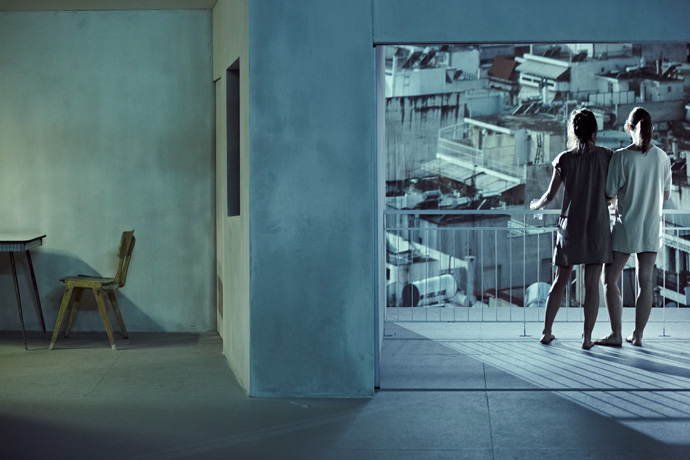
Scene from INSIDE by Dimitris Papaioannou. Photo by René Habermacher -

dimitris papaioannou : spatial and human relationships
-SPATIAL AND HUMAN RELATIONSHIPS
Continuing the conversation with Greek choreographer Dimitris Papaioannou, this second part concentrates on his post olympic work as MEDEA2 and the influences of butoh and his native Athens in his work.
 Scene from MEDEA2 by Dimitris Papaioannou. Photo by René Habermacher
Scene from MEDEA2 by Dimitris Papaioannou. Photo by René HabermacherRENÉ HABERMACHER: Over the years your journey has brought your work to ever-larger audiences. Recently, with your play MEDEA2, you revisited the past. How was that experience?
DIMITRIS PAPAIOANNOU: It challenged me for a number of reasons. If you follow my journey, I was violently exposed to the general public with the success of the Opening Ceremony of the Athens Olympic Games. In order to recover from the experience, I had to take a two-year break.
The first thing I chose to do after this pause was a show called 2. 2 was actually an attempt to pick up where I had left off before the ceremony, to return to my roots and re-evaluate my work. I constructed a very personal show on a large scale because I was offered the opportunity to do so, and I tried to restart my interrupted line of development in an unusual way.
After this experience many question marks arose, and I realised that I was still exposed to a much larger public than I was used to. I had the feeling that there was a new kind of communication being created that was both charming and dangerous. I needed more time before taking my next step.
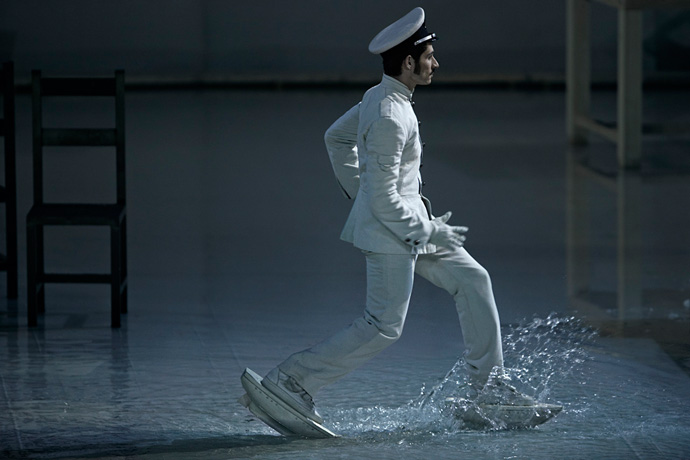 Jason crossing the sea. Scene from MEDEA2 by Dimitris Papaioannou. Photo by René Habermacher
Jason crossing the sea. Scene from MEDEA2 by Dimitris Papaioannou. Photo by René HabermacherMany people were suddenly exposed to my work through the Olympics, but of those who had a real interest, many were too young to have experienced MEDEA. So I returned to MEDEA, attracted by the idea of presenting it again with an all new cast, and approaching it with a new idea: to take the passion out. I wanted to reconstruct it, refine it, clear it out, strip it of anything unnecessary, drain the blood from the performance and deliver it in the cleanest form I could manage. That was my intention with MEDEA2.
Having done that, I could continue with new work, first NOWHERE and now INSIDE. This is a completely new phase, where I am tending to create shows with no protagonists and no characters. The crowd is the element I’m focusing on now, using it in a more open structure in order to create images involving spatial and human relationships.
Excerpts of MEDEA 2 accompanied by interview with Dimitris Papaioannou.
-

dimitris papaioannou : a pasolinian touch
-Dimitris Papaioannou’s work as a choreographer has significantly reshaped the Greek performing arts landscape.
With his directing of the Athens 2004 Olympic Games Ceremony, a ground-breaking success, he played his way straight in the heart of the spectators, hailed a “triumph” by TIME MAGAZINE and THE TIMES of LONDON.In 2005 Dimitris Papaioannou was awarded the Golden Cross of the Order of Honour by the President of the Hellenic Republic for outstanding artistic achievement. For his following shows “2″ and MEDEA2 enjoyed an unprecedented run in the Greek capital, each with over 100 000 tickets sold. This accelerated development came not without controversy. With his latest play INSIDE Dimitris returns to his experimental roots.
THE STIMULEYE met with him during a break of rehearsals in Athens, to speak about his new play and look back to his point of departure.
Following the first part of three on the conversation with Dimitris Papaioannou, accompanied with exclusive pictures by René Habermacher.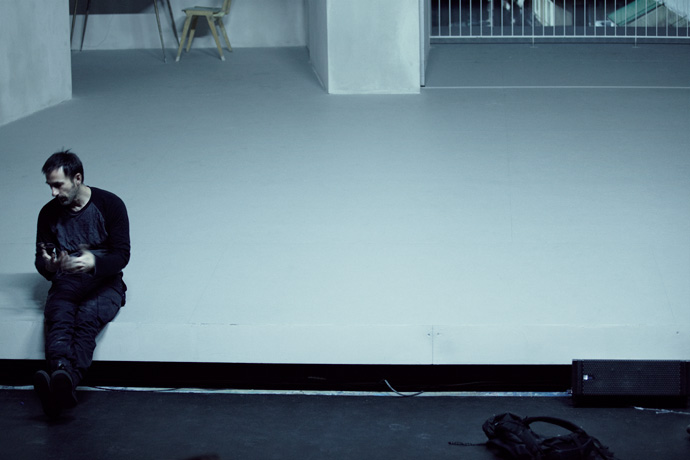 Dimitris Papaioannou on the rehearsal set for his new play INSIDE. Photo by René Habermacher
Dimitris Papaioannou on the rehearsal set for his new play INSIDE. Photo by René Habermacherpasolinian touch
DIMITRIS PAPAIOANNOU: I’ll be right with you — I’m just making a coffee!
RENÉ HABERMACHER: You’re freshly shaven! You look very 19th-century with your moustache.
I am from the 19th century honey, I’m very old!
It’s been a while since we had time for a talk, since I left Athens and you last visited Paris. We met only briefly during the rehearsals for your new play INSIDE, which you’re currently working on. You spent last Spring in New York. Tell me about what you did there.
I was there from March until June on a Fulbright Artist’s Scholarship. A mid-career scholarship obviously… [laughs]
Actually in a way I was studying the story of performance art [with Laurie Anderson at The Kitchen NYC] and developing my Final Cut Pro skills, as well as experiencing a little more of New York life, now that I’m a mature boy and things are different!
How was it returning to Athens after that?
For me it was a blessing because I discovered that I had left New York when I was still under construction. It’s the perfect place to be when you are like that, but in this phase of my life what I found there was a little more superficial than I would have liked. The Athens I returned to was in complete economic crisis and emotionally depressed, but still I was deeply relieved to spend summer back home.
Dimitris, I know you were born in Athens, but we’ve never talked about your childhood.
I was born and grew up in Athens, in a lower-middle class family. My parents made financial sacrifices so that I could go to a very expensive school, the Athens College. Then I had to run away from home because my parents wanted me to live the life of a straight architect. But I was a gay man, and I wanted to be a painter. I became the student of the Greek painter Yannis Tsarouchis* (1) in the old fashioned way, where painters trained people in their atelier. It was there I was introduced to true art. I had been painting since I was a child, but it was when I met Tsarouchis that I realised what painting really was. Later I entered the Athens School of Fine Arts.
* (1) : Yannis Tsarouchis, 1910-1989 One of the most important twentieth-century Greek painters, Yannis Tsarouchis portrayed and helped to define modern Greek identity. The deeply sensual painter was much influenced by the French impressionists and often depicted sailors, soldiers and the nude male body in erotic situations.
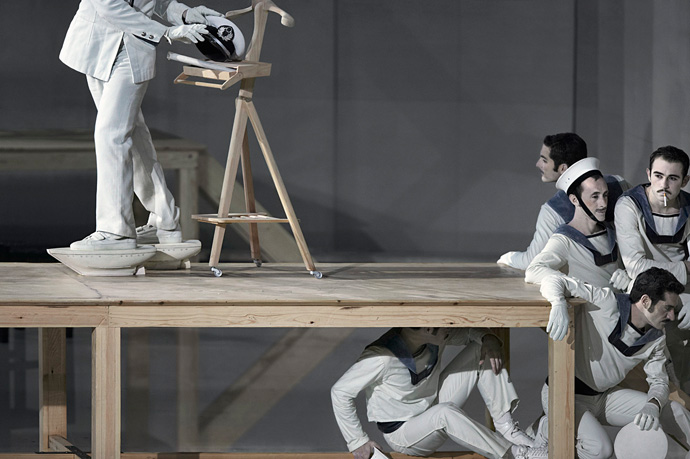 The departure of Jason in reference to Yannis Tsarouchis. Scene from MEDEA2 by Dimitris Papaioannou
The departure of Jason in reference to Yannis Tsarouchis. Scene from MEDEA2 by Dimitris PapaioannouHow did you meet Tsarouchis?
I knocked on his door. I showed him some my paintings and asked for his comments. He was not cruel, as he could have been, about those awkward early drawings — instead he was very polite. My college had organised an exhibition of my work in the building’s library, so I invited Tsarouchis to see my work up close. The next day he called me and invited me back to his house, after which he allowed me to watch him paint, and would give corrections on my paintings. I became his student.
How did this encounter shape you? Did it leave a mark on your artistic work?
Well, your first mentor leaves a strong mark on your life. I grew up in a house that had no contact with artists, there wasn’t a single painting on the walls. My parents weren’t very fond of art, it wasn’t part of their lives. I felt like an alien, wanting to enter this world. So Tsarouchis was the first artist I really saw working, and I realised that the life of an artist is possible and, to my eyes, very charming. I felt at home in a way. And he was a great painter. He had a quality that interests me a great deal: he could make magic with the humblest of materials — he could make roses out of toilet paper, use wires to make small sculptures. The thing I think I have learned from him is that you can make poetry out of garbage.
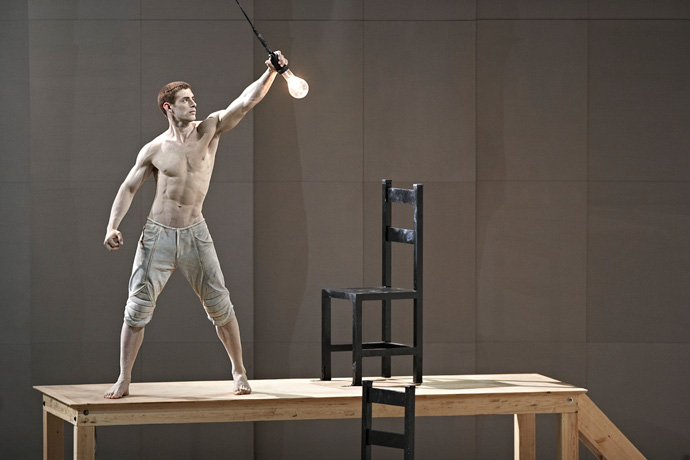 “Helios”. Scene from MEDEA2 by Dimitris Papaioannou. Photo by René Habermacher
“Helios”. Scene from MEDEA2 by Dimitris Papaioannou. Photo by René Habermacher
